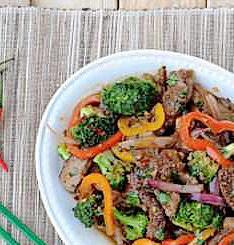ELLE HUGHES | Pexels
THE CONCEPT OF GOING GREEN For some, embracing a green outlook is an adjustment that encompasses every aspect of a person’s lifestyle Viwe Ndongeni-Ntlebi “GOING green” is in the news, commercials, our social media feeds, and in stores. But what does “going green” mean? Smart Minds explain this concept, that’s grown as a global phenomenon, as a means of caring for the environment by making a deliberate effort to be part of the change. “Our bodies endure a lot every day; we subject them to fast foods, polluted air; hence, we should work hard to ensure the toxins in the environment don’t affect us. Switching to more eco-friendly practices means taking a personal stand to be part of the change to achieve green living,” says the hub. For some people the concept of going green is a lifestyle adjustment that encompasses every aspect of a person’s lifestyle. There are many benefits to this lifestyle change. According to Go Green, “buying organic food, a popular go green lifestyle choice, leads to a reduction in chemicals and preservatives entering the body. It may also reduce, if not completely avoid, encounters with GMO foods. In the personal environment, the use of natural
products can reduce the intake of toxins into the system through airborne chemicals. For someone with allergies or concerns over their health, the lifestyle benefits can be a huge reason for why you would go green”. If you are new to green, or sustainable, eating you have likely only considered foods that are good for your personal health. But Fork In The Road, a hub that focuses on going green, says when you commit to eating green it is important to think of the health of the environment as well when considering the sustainability of foods, including fruits and vegetables. Some key questions the green hub says you should consider are: ◆ Where is the food grown? How is it grown (does farming disrupt fragile ecosystems?)? ◆ Who owns the land, who works the land, are they paid a fair wage? ◆ What inputs (pesticides, insecticides, and herbicides) are used? What equipment is used on the farm? ◆ How is the plant harvested, how is it stored, how long does it
take to reach the grocery store? Other ways of going green in your diet could include : Buy Local When you buy food that’s been grown or produced nearby, you help cut down on food that travels from farm to fork. That means reducing the amount of oil being burned and the amount of carbon emitted into the atmosphere. Plus, buying locally often means supporting small farms, which are typically using sustainable agricultural techniques that protect water and build healthy soils. Grow your own Whether you grow a pot of herbs on your windowsill or replace a bed of flowers with dark leafy greens, a home garden is the ultimate local food source. Plus, it's a great way to supplement your trips to the grocery store. Protein-packed vegetables Plant protein options that are easy to incorporate into your diet including lentils, chia seeds (throw them into smoothies, muffins, salad dressings), quinoa, peanuts, and tofu (opt for organic tofu, like Hodo, to ensure it’s made from sustainably sourced soy).














